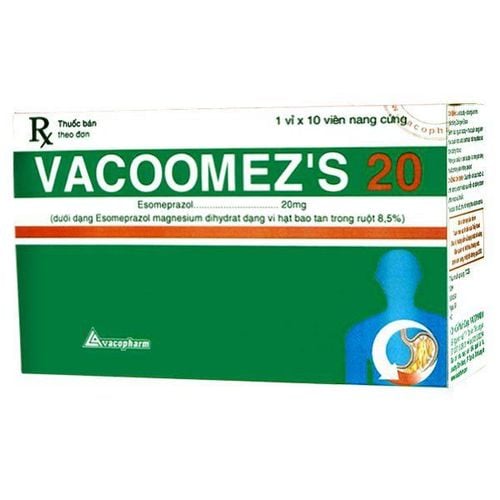This is an automatically translated article.
Razopral has the main active ingredient Pantoprazol 40mg. The drug is indicated in the treatment of reducing acid secretion for duodenal ulcer, gastric ulcer, reflux esophagitis, Zollinger-Ellison syndrome, in combination with the treatment of HP bacteria.
1. What is Razopral?
Razopral has the main ingredient Pantoprazol 40mg, in the form of sodium pantoprazol sesquihydrate. The drug is indicated in cases where acid secretion is required such as duodenal ulcer, gastric ulcer, reflux esophagitis, Zollinger-Ellison syndrome and other hypersecretory diseases. It is also used in combination with antibiotics to kill Helicobacter pylori in patients with duodenal ulcer or gastritis.
2. Dosage and how to use Razoprazole
Razopral is taken orally, once a day in the morning, before or after meals, can be taken with antacids. Because Razopral is destroyed by an acidic environment, it must be taken as an enteric coated tablet, swallowed whole, and should not be broken, chewed, or broken. When taking the drug, it is necessary to follow the entire course of treatment to be effective.
Dosage of Razopral is as follows:
Treatment of acute gastroesophageal reflux disease: 20-40mg/time, 1 time/day in the morning, continuous treatment for 4 weeks, can be increased to 8 weeks if need. In patients with esophageal ulcers that do not heal after 8 weeks, the course of treatment may be prolonged. Treatment of maintenance gastro-oesophageal reflux: At a dose of 20-40 mg/day, safety and effectiveness when used in maintenance doses for more than 1 year have not been established. Treatment of benign gastric ulcer: 40mg/time, 1 time/day for 4-8 weeks. Duodenal ulcer: 40mg/time, once/day for 2-4 weeks. Eradicating Helicobacter pylori: An effective regimen includes oral pantoprazol 40mg, twice a day in the morning and evening + Clarithromicin 500mg, twice a day + Amoxicillin 1g, twice a day or Metronidazol 400mg twice a day; combination therapy for 1 week. Prophylaxis of gastrointestinal ulcers caused by steroid anti-inflammatory drugs: 20mg/day, once/day. Zollinger-Ellison syndrome: The starting dose is 80mg/time/day, increasing to a maximum dose of 240mg/day, doses greater than 80mg/day need to be divided into 2 oral doses. The maximum dose for elderly people is 40mg/day.
3. Contraindications to the drug Razopral
Razopral is contraindicated in people with hypersensitivity to Pantoprazol or any other ingredient of the drug.
4. Use Razopral with caution
Long-term use of Razopral in patients with liver failure requires monitoring of liver enzymes. If liver enzymes are elevated, the drug should be discontinued. Exclude the possibility of malignancy before initiating pantoprazole therapy for gastric ulcer. When treating acid-reducing with Razopral, the stomach becomes less acidic, causing the number of gastrointestinal bacteria to increase, increasing the risk of gastrointestinal infections, mainly caused by Salmonella and Campylobacter. Prolonged treatment with Razopral may cause decreased absorption of vitamin B12 by reducing gastric acid. Therefore, appropriate monitoring and supplementation is required. The article has provided information about the uses, doses and precautions when using Razopral medicine. To ensure safety for your health and maximize the effectiveness of your treatment, you need to take Razopral exactly as directed by your doctor.
Please dial HOTLINE for more information or register for an appointment HERE. Download MyVinmec app to make appointments faster and to manage your bookings easily.













